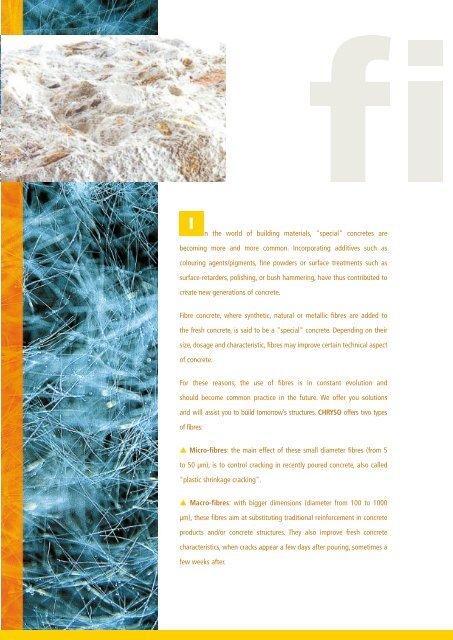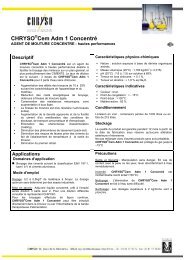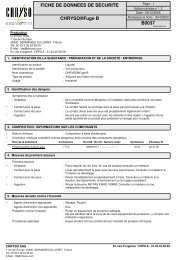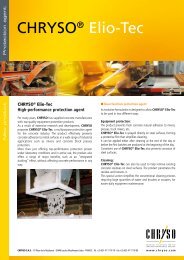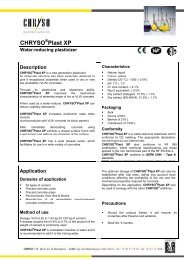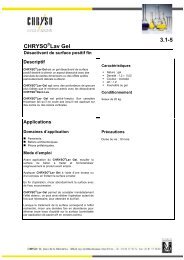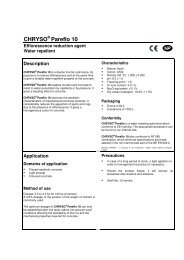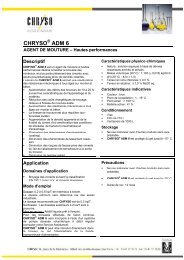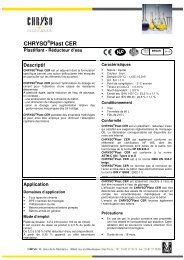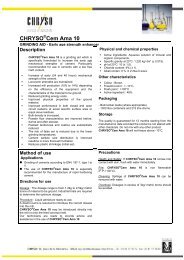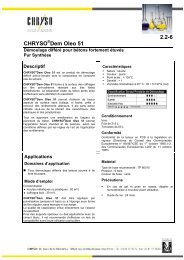Gamme CHR YSO Fibre CHR YSO Fibre range
Gamme CHR YSO Fibre CHR YSO Fibre range
Gamme CHR YSO Fibre CHR YSO Fibre range
Create successful ePaper yourself
Turn your PDF publications into a flip-book with our unique Google optimized e-Paper software.
I<br />
n the world of building materials, "special" concretes are<br />
becoming more and more common. Incorporating additives such as<br />
colouring agents/pigments, fine powders or surface treatments such as<br />
surface-retarders, polishing, or bush hammering, have thus contributed to<br />
create new generations of concrete.<br />
<strong>Fibre</strong> concrete, where synthetic, natural or metallic fibres are added to<br />
the fresh concrete, is said to be a "special" concrete. Depending on their<br />
size, dosage and characteristic, fibres may improve certain technical aspect<br />
of concrete.<br />
For these reasons, the use of fibres is in constant evolution and<br />
should become common practice in the future. We offer you solutions<br />
and will assist you to build tomorrow’s structures. <strong>CHR</strong><strong>YSO</strong> offers two types<br />
of fibres:<br />
▲ Micro-fibres: the main effect of these small diameter fibres (from 5<br />
to 50 µm), is to control cracking in recently poured concrete, also called<br />
"plastic shrinkage cracking".<br />
▲ Macro-fibres: with bigger dimensions (diameter from 100 to 1000<br />
µm), these fibres aim at substituting traditional reinforcement in concrete<br />
products and/or concrete structures. They also improve fresh concrete<br />
characteristics, when cracks appear a few days after pouring, sometimes a<br />
few weeks after.


